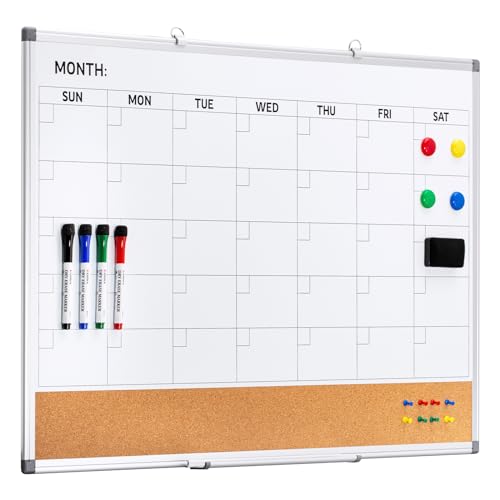Discover the best habit formation strategies to transform your daily routines. Learn how to build lasting habits for personal growth and success in this comprehensive guide.
The Power of Habits in Shaping Our Lives
Habits are the invisible threads weaving through the tapestry of our lives. From the moment we wake up to the time we drift off to sleep, they guide our actions, shape our choices, and, ultimately, define who we are. While some habits are constructive—like exercising or practicing gratitude—others can undermine our progress and goals. The ability to cultivate good habits and break harmful ones is a powerful skill, allowing us to take charge of our lives and unlock our true potential.
The Science Behind Habits
To understand how habits work, we must first examine their fundamental components. Charles Duhigg’s The Power of Habit outlines the “habit loop,” which comprises three key elements:
- Cue: A trigger that initiates the behavior.
- Routine: The action itself, performed in response to the cue.
- Reward: The benefit or pleasure derived from the behavior, reinforcing its repetition.
For instance, consider the habit of snacking while watching TV. The cue might be settling onto the couch, the routine is reaching for chips or candy, and the reward is the enjoyment of the snack. Over time, this loop becomes automatic, making it difficult to break.
Neuroscientific research shows that habits are encoded in the basal ganglia, a brain region responsible for routine behaviors and emotional responses. Repeated behaviors strengthen neural pathways, making them feel effortless and automatic.
By understanding this process, you can design habits that align with your goals and make meaningful changes in your life. Tools like habit tracker journals or habit-tracking apps can aid in visualizing and refining your habit loops effectively.
Why Habits Matter
Habits are the building blocks of personal growth. They simplify decision-making, conserve mental energy, and provide structure and stability. Actions like brushing your teeth or tying your shoelaces, though seemingly mundane, free your mind for more important priorities.
Small habits also have a cumulative effect. For instance, reading for just 20 minutes a day may seem trivial, but over a year, it amounts to over 120 hours of learning. Using tools like blue light blocking glasses can reduce eye strain, supporting evening reading habits and ensuring sustainable routines.
Strategies for Building Habits That Stick
Creating lasting habits requires patience, intention, and consistency. Here are some proven strategies:
- Start Small and Be Specific Begin with manageable steps to build momentum. For example, commit to a 5-minute workout each morning using tools like resistance bands.
- Anchor New Habits to Existing Routines Known as “habit stacking,” this technique involves attaching a new habit to an established one. For instance, journal your thoughts in a habit tracker journal right after brushing your teeth.
- Leverage Environmental Cues Surroundings play a crucial role in habit formation. For hydration, keep a reusable water bottle on your desk, or use sticky notes to remind yourself of new behaviors.
- Reward Yourself Celebrate your progress with self-care items like an essential oil diffuser to unwind after achieving milestones. Positive reinforcement strengthens habits and boosts motivation.
Breaking Bad Habits
While building good habits is essential, breaking harmful ones is equally important. Here’s how:
- Identify Triggers Pay attention to the cues that initiate undesired habits and find healthier alternatives. For example, replace late-night snacking with sipping herbal tea on a comfortable yoga mat.
- Increase Friction Make bad habits less convenient. A phone docking station can help reduce screen time by keeping devices out of reach during meals or before bed.
- Enlist Support Share your goals with friends or family to stay accountable and motivated.
Advanced Habit-Building Techniques
For those who want to go beyond the basics, here are some advanced techniques to optimize your habits:
- Habit Optimization Through Reflection Regularly evaluate your habits with tools like a weekly desk planner to ensure they align with your goals.
- Temptation Bundling Pair a habit you need to do with something you enjoy. For example, listen to podcasts using noise-canceling headphones while working out.
- Habit Tracking Data Use technology, such as fitness watches or habit-tracking apps, to monitor trends and maintain consistency.
- Variable Rewards Celebrate milestones intermittently, such as rewarding a week’s streak with a relaxing session using an essential oil diffuser.
- Identity and Habit Synergy Align habits with your self-image to boost intrinsic motivation. For instance, affirm, “I am a healthy and active person,” rather than just saying, “I exercise.”
- Environmental Resets Refresh your surroundings to invigorate your habits. For example, create a workout space with resistance bands and yoga mats.
- Accountability Structures Join communities or use habit tracker apps to share progress and stay motivated.
- Visualization Techniques Mentally rehearse yourself succeeding in your habits. Combine this with physical tools, like habit trackers, for reinforcement.
- Advanced Planning with “If-Then” Strategies Prepare for setbacks using contingency plans. Write them down in a desk planner to stay proactive.
- Layering Multiple Habits (Habit Chains) Link habits together to form sequences. For instance, start your morning with stretching, journaling, and drinking water. Use reminder boards to keep your chain visible.
Habit-Building Essentials
To make your habit-building journey easier, consider these tools:
- Habit Tracker Journals: Monitor daily progress and celebrate milestones.
- Resistance Bands & Yoga Mats: Perfect for starting manageable daily workouts.
- Reusable Water Bottles: Keep hydration within reach throughout the day.
- Desk Planners & Reminder Boards: Organize tasks and create visual triggers.
- Noise-Canceling Headphones: Enhance focus during meditation, journaling, or reading.
- Motivational Books: Gain inspiration from titles like Atomic Habits by James Clear.
- Phone Docking Stations: Reduce screen time distractions.
Conclusion
Habits are not just actions; they are the threads that weave the fabric of our lives. By understanding the science behind habits, leveraging proven strategies, and using tools like habit tracker journals and motivational books, you can take control of your routines and create a life aligned with your aspirations.
The journey of habit building begins with a single step—and the right tools can make all the difference. So, what habit will you cultivate today?
Note: This page contains affiliate links. If you purchase through these links, we may earn a small commission at no extra cost to you. Thank you for supporting our work!
- Durable & Premium Quality – This habit calendar and habit journal features a thick cardboard cover and 120 GSM paper to …
- Goal Tracking & Motivation – Stay accountable with a habit tracker planner that helps track your workout calendar, self …
- Visual Progress & Accountability – This weekly and monthly habit tracker and goal setting journal provide a clear way to…
- Large Desk Calendar Size: 17 X 22 inches. The daily block has ample space to record significant events for each day.
- Monthly Desk Calendar with Stickers: One month per page layout help you organize your monthly plans and goals. The calen…
- High-quality Thick Paper: Offer A Smooth Writing Experience without any ink bleeding through the paper.
- 【Cork Board & Calendar Whiteboard Combo】The magetic calendar with cork has high quality surface, and the bottom is made …
- 【Smooth Writing and Easy to Clean】: The dry erase calendar provides a smooth and precise writing experience. Furthermore…
- 【Easy to Install and Hang】This large monthly calendar white board for wall comes with durable anti-scratch aluminum fram…
- EVERYTHING YOU NEED IS INCLUDED: Purchase includes an initial 12-month WHOOP membership, 4.0 hardware, Onyx SuperKnit ba…
- CONTINUOUS MONITORING: WHOOP is a unique wearable fitness device that offers continuous monitoring of physiological data…
- PERSONALIZED FOR YOUR GOALS: WHOOP is insight-driven, providing users with clear next steps and a science-backed approac…














